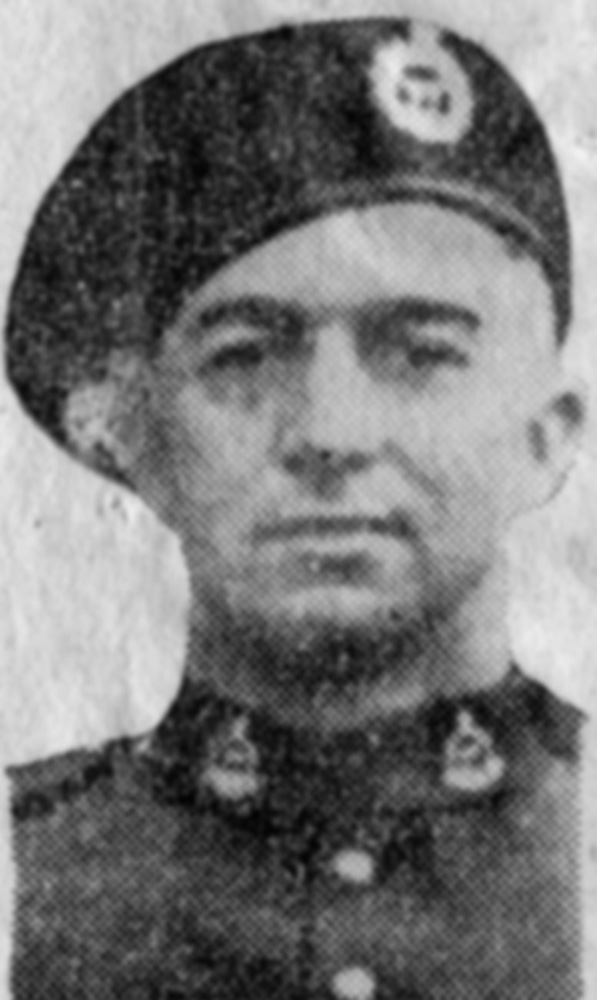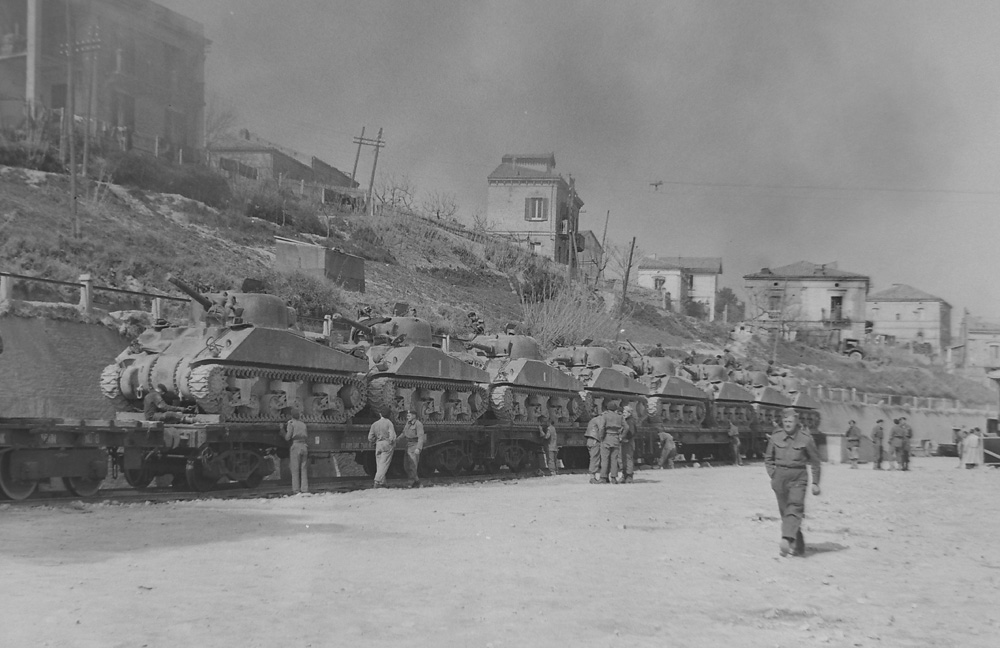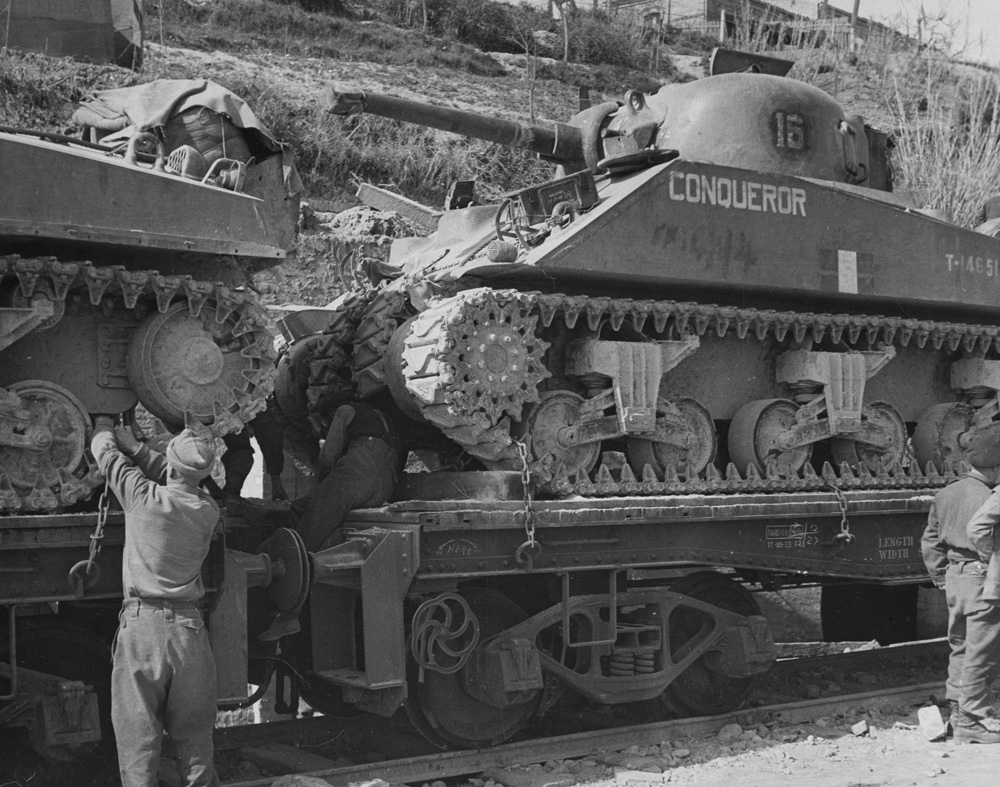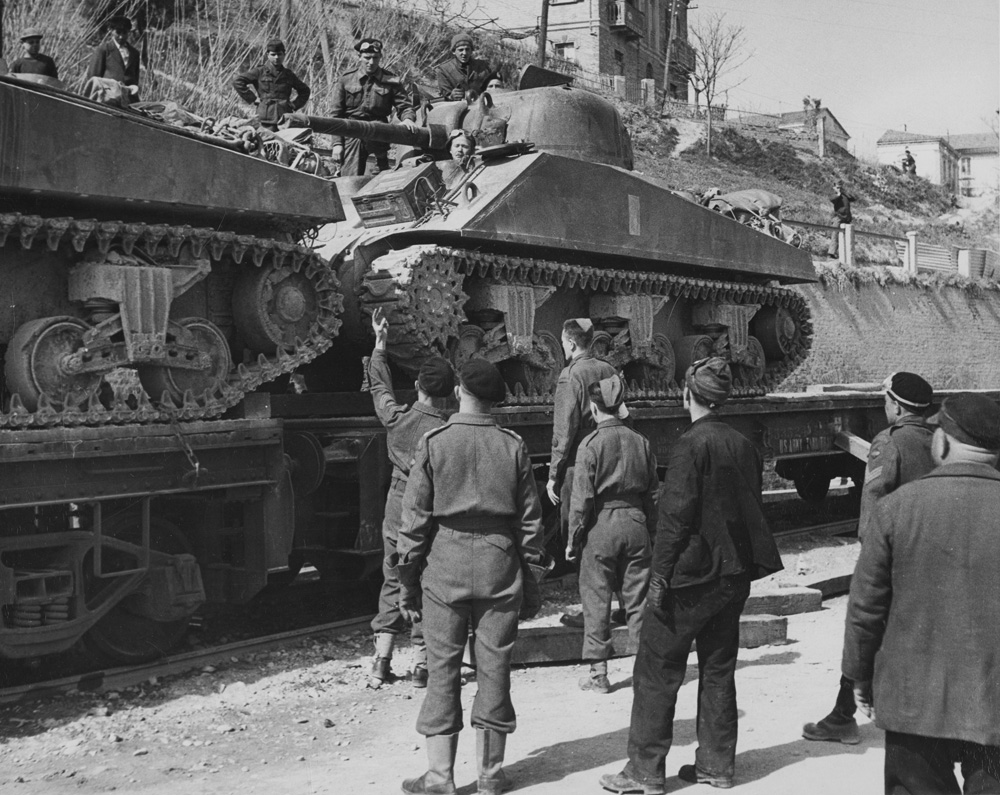The war in Italy had ground to a halt by the beginning of 1944. General Bernard Montgomery’s British Eighth Army was bogged down north of Ortona due to the wet weather. The American Fifth Army, under the command of General Mark Clark, was at a standstill in the mountains south of Cassino. The Allied drive to Rome would have to wait until spring.

The Ontario Regiment received a new commanding officer on 17 January when Lieutenant-Colonel Robert Lloyd Purves replaced Lieutenant-Colonel H.R. Schell, who had been medically evacuated on 3 January. Major Charles M. McLean arrived at the same time to be the Ontarios’ new second-in-command. Both officers transferred from the Three Rivers Regiment.

On the night of 19 January, a house containing sleeping members of the Regiment was targeted by German artillery fire. Captain Jack Gormley and Trooper Dave Porter ran into the house and began waking the men, but the house took a direct hit before everyone was evacuated. Corporal Ernest J. Wells from Udora, Ontario was killed and five were wounded. Wells was a pre-war member of the Regiment, having served between 1934 and 1937. He rejoined the Regiment for active service in the first week of September 1939. Prior to the war he was working as a tanner at Shaw’s Tannery in Omemee, Ontario. His service record also indicates that he worked as a mechanic and in motorcycle delivery.
The Ontario Regiment did not see any major fighting from the end of January to early April. It was a time of training with the other combat arms. The only real diversion from this program was the ski detachment operation in February, which was covered in the February 2024 website article. The Regiment moved to a new area between Lanciano and Castel Frentano by the end of January for the upcoming training program.
The first round of training began on 27 January with “C” Squadron working with the British 1/4 Essex Regiment and the 9th Ghurkha Rifles. The focus was on communication between armour and infantry, which included lectures, field exercises, and a firepower demonstration of the 75mm gun. Trials were conducted using the Sherman tanks to tow the infantry’s anti-tank guns.
Training with artillery units was conducted in mid-February. There was reciprocal training with the 111th Army Field Regiment, Royal Artillery on forward observation techniques and directing artillery fire from observation posts. This was followed by six days of training with 53rd Field Regiment, Royal Artillery. In early March there was familiarization on the 25-pounder gun, mine-detecting and lifting, and an exchange
of personnel with the 66th Medium Regiment, Royal Artillery, and 2nd Light Field Ambulance.
This period of training at this static location came to an end on 12 March. The Regiment briefly relocated to locations around Ortona before moving by train to the area near the town of Presenzano.




Training with infantry and artillery units of the British 4th Infantry Division and the 8th Indian Infantry Division was conducted in April, with the goal of preparing to cross the Gari River. During this time, the Ontario Regiment worked with several infantry units including 2 Somerset Light Infantry, 1 Royal Fusiliers, 1/5 Royal Gurkha Rifles and 1/12 (Prince of Wales’s Own Sikhs) Frontier Force Regiment. On the artillery
side, the Ontarios trained with 2 Medium Regiment and 98th Field Regiment. There was also training with 13th Field Company of the Royal Canadian Engineers and two Royal Air Force air observation post squadrons. The training with each group typically began with lectures and demonstrations of equipment.
Training then moved into the field and increased in size and complexity. There were also live firing exercises to keep the Ontarios’ gunners skills at a peak level. The training period was a great success which led to increased confidence and trust among the soldiers from all arms.
In late April M3A3 Stuart tanks, with their turrets removed, arrived at the Regiment to replace the Universal Carriers for the reconnaissance role. A Browning .50 calibre machine gun was mounted on the turret ring in the place of the turret. By 21 April there were 10 Stuarts on Regimental charge. These tanks were popularly known as “Honeys.” Conversion training on the Stuart was led by a sergeant from the Royal Armoured Corps.
The training program concluded in the first week of May. With the weather getting warmer and somewhat drier, plans for renewing offensive operations began at higher levels of command. The next five months would see almost continuous combat for the Ontario Regiment and they would suffer half of all deaths in the entire war.
Rod Henderson
Rod Henderson is the Regimental Historian of the Ontario Regiment. He served as a Sergeant in the Regiment and is the author of “Fidelis Et Paratus: The History of The Ontario Regiment RCAC”.

